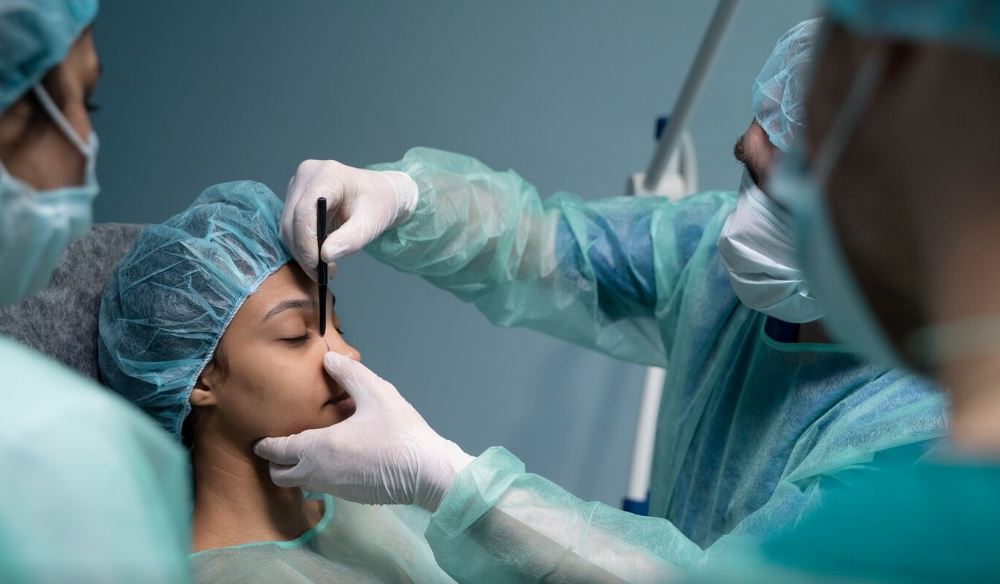
Imagine waking up one day to discover that having a tooth implanted in your eye is your only chance to see again. That’s precisely what happened to Brent Chapman, who suffered a severe autoimmune reaction at the age of 13 and lost his vision. Following years of ineffective therapies, physicians presented him with a drastic remedy: osteo-odonto-keratoprosthesis (OOKP), commonly referred to as “tooth-in-eye” surgery.
Brent Chapman: Bio, Career, and Medical Breakthrough
| Attribute | Details |
|---|---|
| Full Name | Brent Chapman |
| Age | 33 years old |
| Birthplace | North Vancouver, Canada |
| Medical Condition | Blindness due to an autoimmune reaction at age 13 |
| Surgery Performed | Osteo-odonto-keratoprosthesis (OOKP) |
| Procedure Date | March 2025 |
| Lead Surgeon | Dr. Greg Moloney |
| Hospital | Mount Saint Joseph Hospital, Vancouver |
| Funding Source | St. Paul’s Foundation ($430,000 donation) |
What Is the Process of “Tooth-in-Eye” Surgery?
This groundbreaking procedure involves two major steps, each requiring extreme precision. First, a tooth—typically a canine—is extracted, shaped, and fitted with a small optical lens. This unique design allows the tooth to function as a bio-compatible holder for the lens, preventing rejection by the body.
In the next stage, the modified tooth is implanted under the patient’s cheek to allow tissue to grow around it. After a few months, surgeons remove it and place it into the eye, replacing the damaged cornea. The lens embedded in the tooth acts as a new “window” for vision, offering patients like Chapman a chance to see again.
What’s the Use of a Tooth? The Science Behind the Innovation
Teeth are remarkably effective at integrating with human tissue, making them an ideal foundation for supporting an artificial lens. A tooth derived from the patient‘s own body, as opposed to synthetic implants, greatly lowers the possibility of infection or rejection. The surrounding tissue aids in the eye’s acceptance of the new implant, while the dentine structure offers durability.
A Last Resort for People Who Didn’t Think They’d See Each Other Again
After several unsuccessful corneal transplant attempts, OOKP is frequently the last resort for patients. Traditional treatments often rely on donor corneas, but for those with severe damage from burns, autoimmune diseases, or chemical injuries, standard transplants don’t work. The “tooth-in-eye” surgery offers a second chance—one that seemed impossible until now.
An Ultra-Rare Operation with Startling Outcomes
While OOKP is highly efficient in restoring sight, it remains one of the rarest eye surgeries in the world. Since only a small number of experts worldwide are qualified to carry it out, Chapman’s argument was especially revolutionary for Canada. Until now, patients had to travel overseas for the operation.
94% of patients maintained their vision even after 27 years, according to a 2022 study, demonstrating the long-term effectiveness of this unorthodox strategy. While some risks remain, the potential for life-changing results makes it an increasingly attractive option for those who have exhausted other treatments.
What’s Next for Brent Chapman on His Road to Recovery?
The first stage of Chapman’s surgery has gone well, and he will return in a few months for the last operation. He might regain near-normal vision if everything goes according to plan, which would have seemed like an impossible dream only a few years ago.
Beyond restoring sight, this procedure offers something even greater—freedom. Chapman has talked about how happy he is to be able to do things he never thought he would again, like navigate everyday life. His tale is proof of both the extraordinary powers of contemporary medicine and the tenacity of the human spirit.
Could This Surgery Become More Common?
Interest in improving and extending the use of OOKP is rising as medical technology develops. Alternative biomaterials that resemble teeth are being investigated by researchers in hopes of opening up the procedure to a larger patient base.
This surgery might become a common treatment option rather than an experimental last resort if funding and awareness keep increasing. The future appears bright for those who might eventually benefit from this ground-breaking procedure, as Canada has now successfully completed its first cases.
Final Thoughts: A Life-Altering Breakthrough in Medicine
Brent Chapman’s story is a testament to perseverance and the power of innovation. Using a tooth to restore vision, which at first seemed like a ridiculous idea, is now a tried-and-true technique that has the potential to transform countless lives. His journey serves as an inspiration, not just for those with visual impairments, but for anyone who believes in the limitless potential of medical science.
FAQs Regarding the Eye Surgery of Brent Chapman
Which surgery was performed on Brent Chapman?
He had “tooth-in-eye” surgery, or osteo-odonto-keratoprosthesis (OOKP).
For what reason was a tooth placed in his eye?
Teeth are perfect for vision restoration because they offer a solid, biocompatible base on which to place an optical lens.
Is this a typical procedure?
No, only a few nations carry out this uncommon, last-resort procedure.
Will Brent Chapman fully regain his vision?
If successful, he could see close to normal, though results vary by patient.
Is this surgery permanent?
According to studies, vision can be preserved for decades, but sustained observation is necessary.
